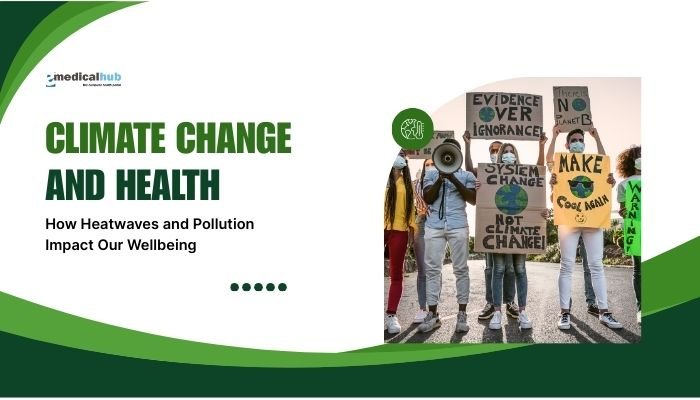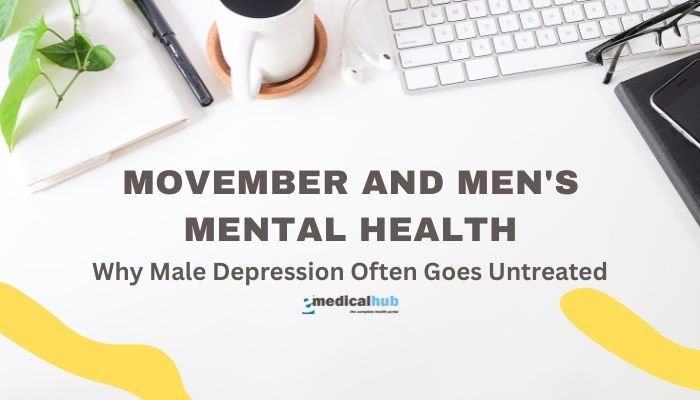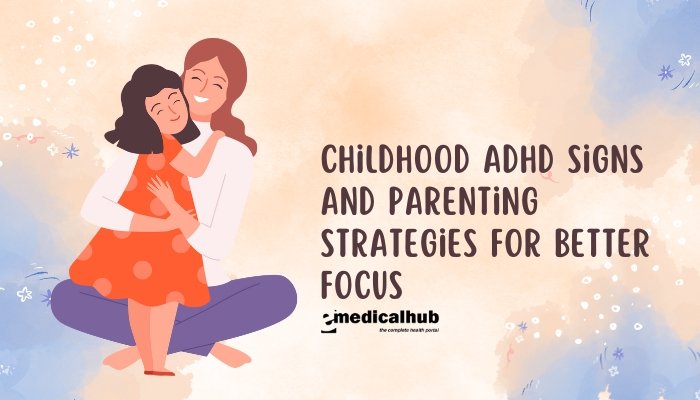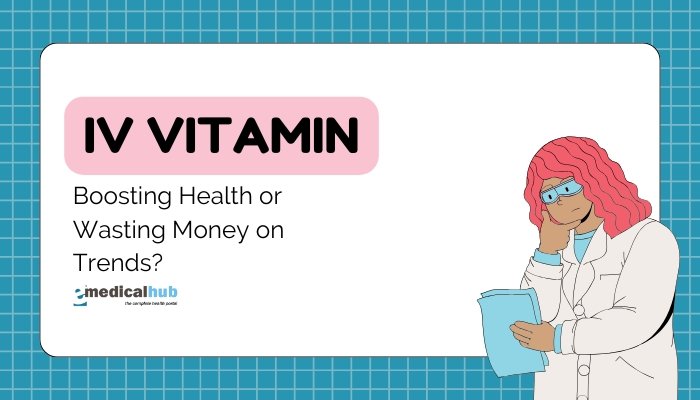Introduction
Climate change continues to transform the planet’s ecosystems, weather patterns, and overall habitability. From unprecedented heatwaves to worsening air pollution, global temperature rise and shifts in atmospheric dynamics pose direct and indirect threats to human health.
Although climate-related phenomena—such as rising sea levels, droughts, and severe storms—have captured much public attention, the day-to-day impacts of more frequent heatwaves and degrading air quality are equally urgent.
These changes can heighten susceptibility to heart and lung diseases, disrupt agricultural productivity, and exacerbate socio-economic inequalities.
This article explores how climate change and resultant heatwaves and pollution episodes combine to affect physical and mental well-being. We will delve into scientific insights on why extreme heat events are intensifying, how changes in temperature and weather patterns aggravate air pollution, and the resulting health burdens.
We will also examine who is most at risk and discuss proactive steps—from individual actions to community policy—that can protect against these converging environmental crises. Understanding the nexus of climate and health is essential, because safeguarding public health today and for future generations hinges on mitigating climate change and adapting to its new realities.
The Link Between Climate Change and Rising Temperatures
Greenhouse Effect and Global Warming
- Key Mechanism: Human activities (e.g., burning fossil fuels, deforestation) release carbon dioxide (CO₂), methane (CH₄), and other greenhouse gases. These gases trap heat in the atmosphere, raising Earth’s average surface temperature.
- Continued Emissions: Despite some global efforts, greenhouse gas concentrations keep climbing. This extra heat accumulation modifies atmospheric conditions and ocean currents, intensifying weather extremes.
- Predicted Warming: The Intergovernmental Panel on Climate Change (IPCC) projects that unless emissions are drastically cut, average global temperatures could exceed 2°C above pre-industrial levels by mid-century, significantly amplifying heatwaves.
Heatwaves Defined
- What Are Heatwaves?: Periods of abnormally high temperatures (relative to local norms) that linger for days or weeks. They often come with night-time temperatures that fail to cool sufficiently.
- Frequency and Intensity: Analysis shows that “once-in-a-decade” heat extremes now happen more often—some areas see them every few years. The severity also grows, with record-smashing daily highs.
- Urban Heat Island Effect: In cities, concrete and asphalt absorb heat, raising local temperatures. Urban areas often experience nighttime heat that’s 1–3°C higher than rural surroundings, exacerbating heat stress for residents.
Why It Matters for Health
- Thermoregulation Strain: The body dissipates heat mainly by sweating and increasing blood flow to the skin. Excess heat, especially if humidity is high, overwhelms these mechanisms, risking heat exhaustion or heatstroke.
- Consequences for the Vulnerable: Older adults, children, outdoor laborers, and people with cardiovascular conditions or diabetes are more prone to heat-related complications.
- Infrastructure and Economy: Heat can compromise power grids, hamper daily routines, and degrade air quality, compounding stress on healthcare systems.
Key Note: Climate models consistently point to heatwaves becoming longer, more frequent, and more intense as global warming proceeds—turning them into a top climate-health challenge.
Heatwaves’ Direct Effects on Human Health
Physiological Stress and Heat-Related Illnesses
Heat Exhaustion
- Signs: Heavy sweating, clammy skin, dizziness, headache, muscle cramps, rapid heartbeat.
- Risks: If left unmanaged, it can lead to heatstroke, which is life-threatening.
Heatstroke
- Definition: A core body temperature exceeding ~40°C (104°F), accompanied by neurological symptoms like confusion, loss of consciousness, or seizures.
- Outcomes: Can cause organ failure, permanent disability, or death if not rapidly treated (e.g., with active cooling and medical intervention).
Chronic Conditions Aggravated by Heat
- Cardiovascular Strain: Heat compels the circulatory system to work harder. For people with heart disease, this can precipitate arrhythmias or ischemic events.
- Respiratory Disorders: Air pollution (ozone, particulate matter) often spikes in hot weather, further constricting airways for those with asthma or COPD.
- Renal Problems: Persistent dehydration from sweating can put stress on kidneys, risking acute kidney injury in severe cases.
Behavioral and Mental Health Impacts
- Sleep Disruption: Hot nights reduce restful sleep, leading to fatigue, irritability, and poor cognition.
- Mental Stress: Extended heat exposure can aggravate stress, depression, or anxiety, as daily routines become unbearable.
- Reduced Productivity: Work performance dips, with unsafe labor conditions for outdoor workers.
The Air Pollution Dimension: How Climate Worsens It
Climate-Driven Pollutant Dynamics
- Ozone Formation: Heat and sunlight accelerate chemical reactions among pollutants (nitrogen oxides, volatile organic compounds), raising ground-level ozone concentrations.
- Stagnation Episodes: High-pressure systems associated with heatwaves trap pollutants, leading to smog build-up in urban basins.
- Wildfires: Warmer, drier conditions intensify fire seasons, generating thick smoke that travels across regions, loading the air with fine particulate matter (PM2.5).
Pollution’s Health Effects
- Respiratory Issues: Elevated ozone irritates airways, triggering asthma attacks or lung inflammation. Fine particles can penetrate deep into alveoli, aggravating heart/lung diseases.
- Cardiovascular Strain: Exposure to PM2.5 correlates with heightened risk of heart attacks, arrhythmias, and strokes.
- Vulnerable Subpopulations: Children’s developing lungs, older adults, and those with pre-existing cardiopulmonary conditions face disproportionate burdens.
Synergistic Pressures with Heat
- Hot, Polluted Days: The dual impact can multiply hospital admissions for heatstroke and respiratory or cardiac events.
- Energy Use: Increased air conditioning usage to combat heat can drive more fossil fuel combustion (in some regions), ironically adding emissions that worsen air quality.
Socioeconomic and Environmental Inequalities
Urban/Rural Disparities
- City Heat Islands: Limited green spaces, dense infrastructure, and tall buildings hamper cooling, making city dwellers more heat-affected.
- Rural Healthcare Access: Less direct access to advanced medical facilities for acute respiratory or heat illnesses.
Low-Income Communities
- Housing Quality: Inadequate insulation or no access to air conditioning leaves poor households highly vulnerable during heat surges.
- Occupational Hazards: Agriculture, construction, or street vending involve outside work under scorching conditions.
- Air Pollution Zones: Industries often cluster near marginalized neighborhoods, amplifying pollutant exposures.
Global Perspective
- Developing Countries: Resource constraints hamper robust heatwave warning systems or enforcement of pollution controls.
- Refugee Camps: Overcrowding, limited shelter, and inadequate healthcare can transform heat or smog episodes into humanitarian crises.
Strategies to Mitigate Health Risks from Heatwaves
Early Warning Systems and Public Alerts
- Forecasting: Meteorological agencies can predict extreme heat days. Timely announcements help individuals and authorities prepare.
- Heat Action Plans: Some cities have protocols, e.g., opening cooling centers, distributing water, or mobilizing emergency responders.
- Community Outreach: Public messaging via radio, text alerts, or community leaders to ensure awareness.
Building Design and Adaptation
- Passive Cooling: Housing with cross-ventilation, shading, green roofs to reduce indoor temperatures.
- Urban Greening: Planting trees, expanding parks, and using reflective surfaces in city planning to mitigate heat islands.
- Air Conditioning Equity: Policies or subsidies that ensure vulnerable populations can access cooling, or at least communal cooling refuges.
Personal Measures
- Hydration: Drinking sufficient water, avoiding alcohol or caffeine that can exacerbate dehydration.
- Clothing Choices: Lightweight, loose-fitting garments in light colors.
- Scheduling: Avoiding strenuous outdoor activity during peak midday heat; shifting chores to cooler morning or evening hours.
Approaches to Reducing Air Pollution
Regulatory and Policy Interventions
- Stricter Emissions Standards: For vehicles, power plants, and industrial facilities.
- Transition to Clean Energy: Phasing out coal, promoting renewables, supporting electric transport.
- Enforcing Fuel Quality: Low-sulfur fuels, advanced catalytic converters reduce harmful particulates.
Community-Level Actions
- Public Transit & Carpooling: Reducing vehicular traffic lowers pollutant output.
- Tree Planting: Vegetation can help filter particulates and offset heat, though it’s not a cure-all.
- Local Partnerships: Citizens, NGOs, and local governments championing smog checks, banning crop burning, or stopping open waste burning.
Indoor Air Quality
- Ventilation Systems: Use of HEPA filters or proper ventilation mitigates infiltration of outdoor pollutants in high smog days.
- Smart Home Appliances: Air purifiers, checking for radon or other indoor hazards.
- Personal Protection: Face masks (N95, KN95) in times of poor outdoor air quality to filter fine particulates.
Adaptation and Mitigation in the Face of Climate Change
Reducing Greenhouse Gases
- International Agreements: Fulfilling or strengthening commitments under the Paris Agreement can slow further warming.
- Corporate Accountability: Encouraging or mandating industries to shift to low-carbon operations.
- Lifestyle Shifts: Energy efficiency, diet changes (less red meat, local produce), limiting flights collectively reduce carbon footprints.
Public Health Infrastructure
- Surveillance: Tracking disease patterns linked to temperature spikes or pollution episodes.
- Climate-Informed Healthcare: Training professionals to manage heat-related conditions, developing robust cooling systems in hospitals.
- Data Sharing: Collaboration among meteorologists, epidemiologists, and policymakers fosters integrated solutions.
Resilience Building
- Community Education: Teaching people how to respond to extreme weather, develop emergency plans, store water, maintain power backups.
- Urban Planning: Designing cities with climate resilience, e.g., flood mitigation, green corridors for cooler microclimates.
- Financial Mechanisms: Insurance, climate funds, or microgrids for critical infrastructure ensuring continuity in crises.
High-Risk Populations and Focused Interventions
Children and Infants
- Physiological Vulnerability: Underdeveloped thermoregulation, smaller airways sensitive to pollutants.
- Protective Steps: Immunizations (for pneumonia-causing pathogens), reduced playground time during extreme heat or peak pollution hours.
Elderly
- Chronic Conditions: Heart disease, respiratory ailments worsened by heat/pollution synergy.
- Social Outreach: “Check on your neighbor” programs, ensuring older adults have functioning fans or AC, consistent medication supply.
Outdoor Workers
- Occupational Hazards: Heat stress, inhalation of dust or smog.
- Protective Laws: Enforcing mandated rest breaks, providing shade, water, rotating tasks to reduce continuous exposure.
Low-Income Communities
- Housing Gaps: More likely in older, poorly insulated homes, near highways or industrial sites with high pollution.
- Community Solutions: Partnerships for installing air filters in low-income housing, discounts on electricity for AC usage.
Keeping Track and Taking Action
Personal Steps
- Check Local Air Quality Index (AQI): Stay indoors or limit strenuous activity outside on poor air days.
- Monitor Weather: On extreme heat days, plan cooling strategies—dress lightly, hydrate.
- Reduce Carbon Footprint: Simple daily choices (carpool, energy-saving appliances, consume less energy) contribute to broader change.
Advocacy and Policy Engagement
- Voting: Support leaders promising credible climate policies or better public transit.
- Community Projects: Urban farming, orchard planting, or local recycling programs.
- NGO Collaboration: Join or donate to organizations focusing on climate adaptation, environmental justice, or health equity.
Healthcare Collaboration
- Physician Advice: Seek guidance if having pre-existing conditions. They might recommend inhalers, medication adjustments, or inhaled bronchodilators in heat/polluted episodes.
- Annual Check-ups: For older adults especially, to refine management plans for expected heat/pollution events.
Conclusion
Climate change is intensifying heatwaves and deteriorating air quality, leading to more frequent and severe health crises. Especially for children, seniors, and those living in under-resourced areas, the dual challenge of high temperatures and pollution can be life-threatening. Emphasizing robust mitigation strategies (reducing greenhouse gas emissions and pollution sources) and adaptation measures (improving infrastructure, promoting early warning systems, ensuring vaccine coverage) is essential to protect public health.
Ultimately, tackling this crisis demands a collective mindset: individuals making daily environmentally responsible choices, communities forging resilient policies, and global bodies ensuring equitable resources to handle climate-driven adversities. When we unify to slow climate change and reduce pollution, the outcome is not solely a healthier planet but also a safer present and future for all.
Frequently Asked Questions (FAQ)
- How do I know if my symptoms are from heat exposure or air pollution?
- Overlapping symptoms exist (e.g., fatigue, shortness of breath). However, heat-related issues typically revolve around body overheating (sweating, dizziness), while pollution triggers respiratory irritation. Checking local conditions (heat index, AQI) can help differentiate.
- Are masks effective against pollution?
- Certain masks (e.g., N95/KN95) can filter fine particles. Cloth masks are less effective for smog or wildfire smoke. For heat, masks don’t help, though staying hydrated and in well-ventilated places does.
- Do I need to run air purifiers?
- For those in high pollution zones or during wildfire smoke, HEPA-based air purifiers are beneficial, especially for sensitive individuals like asthmatics or the elderly.
- Can my child safely play outdoors on a high-heat or high-AQI day?
- Consider limiting vigorous activity, ensuring water breaks, possibly relocating activities indoors if the risk is elevated.
- Which is more dangerous—heatwave or air pollution?
- Both are hazardous. Depending on personal health status, either can precipitate severe outcomes. Combined heat and pollution further compound the risks.
- Does climate change cause more wildfires?
- Warmer, drier conditions intensify wildfire risk. Wildfire smoke then exacerbates local and sometimes long-distance air pollution.
- Should I worry about climate change if I live in a cooler region?
- Regions historically mild may face unprecedented heat extremes or shifting pollution patterns, so no place is entirely immune. Preparedness is universal.







